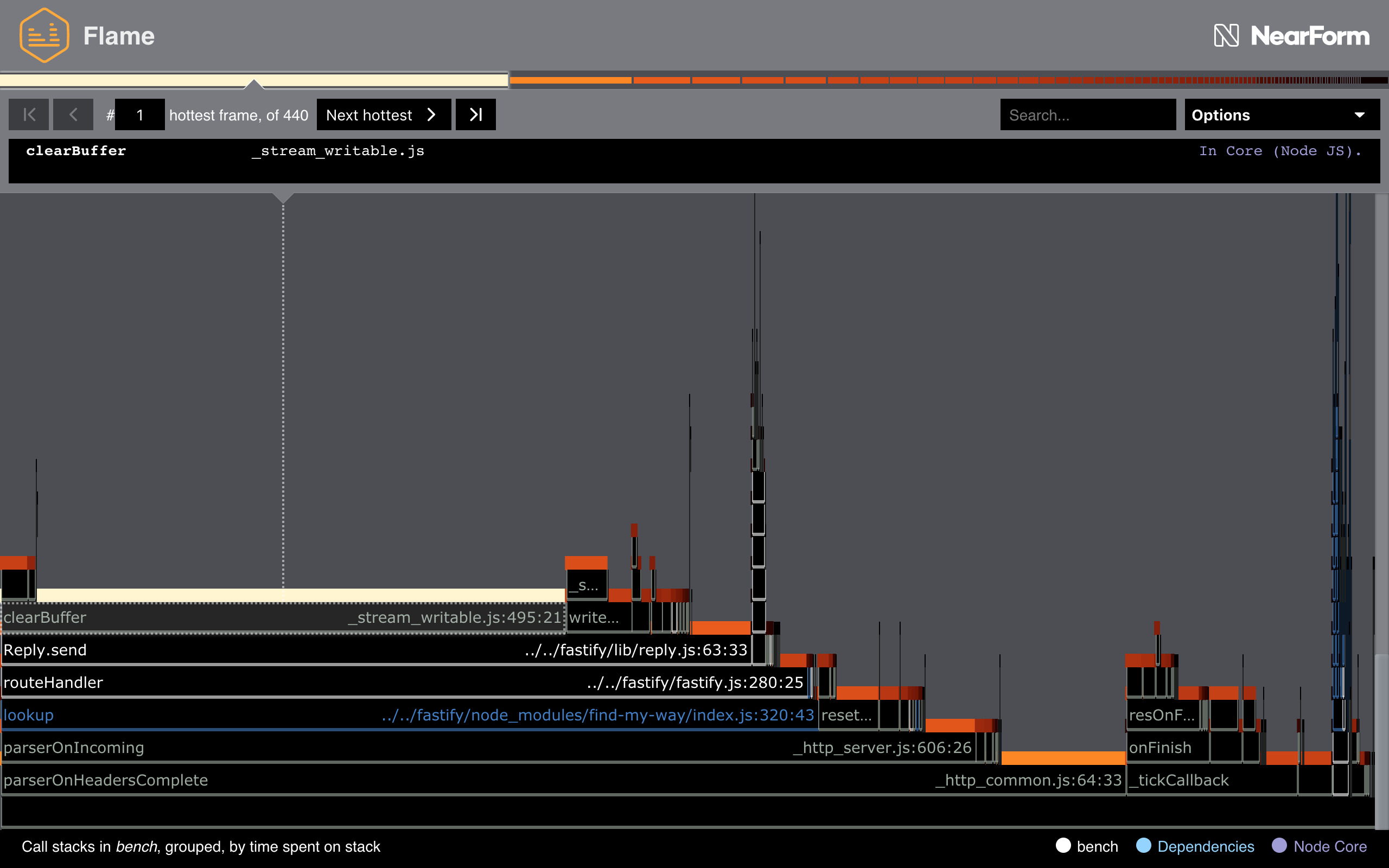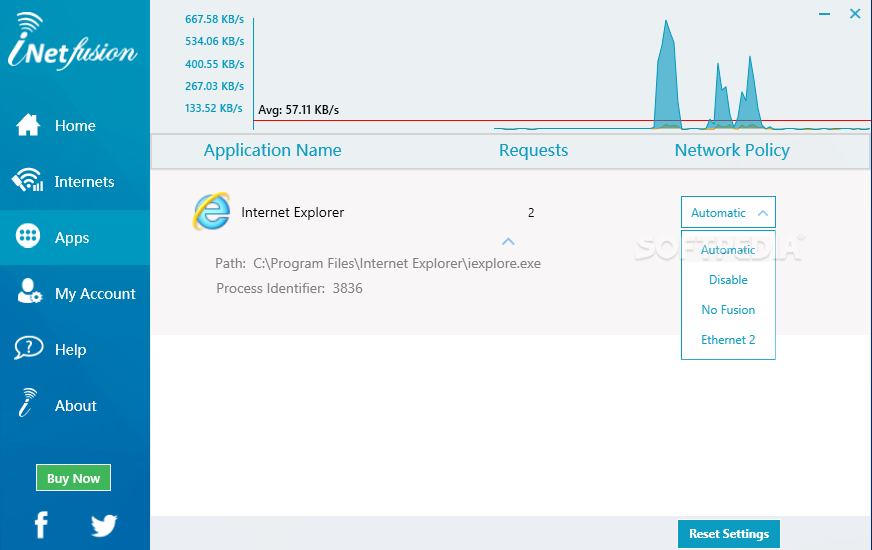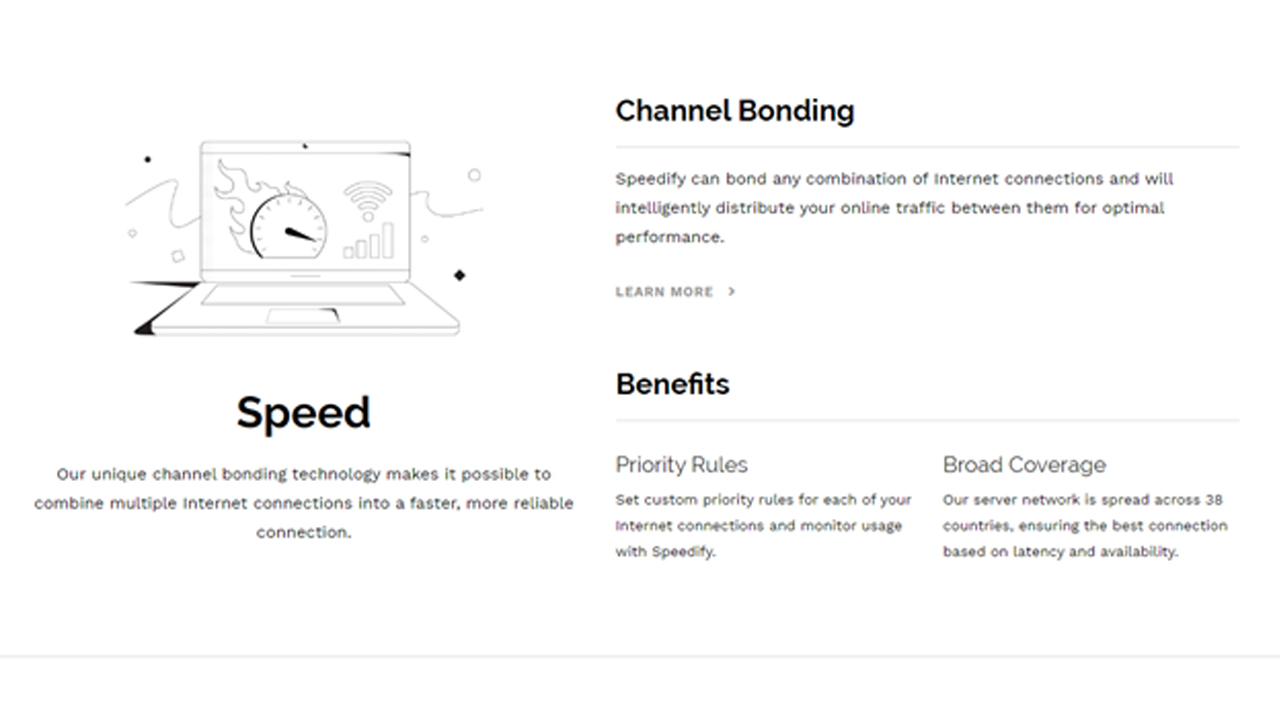

The Wi-Fi network was backed by a 1 Gbps Verizon Fios Internet connection.
SPEEDIFY VS INETFUSION ANDROID
Then, we wanted to simulate real life conditions of moving around the house or through the city - we tested an Android phone with 25 Mbps Wi-Fi at various packet loss rates. This illustrates some typical conditions for working in an office / from home on a high speed broadband connection. We ran with no VPN, WireGuard, and Speedify. Speedify testing scenarios: First, we tested with a Linux laptop connected with Ethernet to the 1 Gbps connection. The results in the summary table below are an average of 3 test runs.įor the packet loss tests, we used an OpenWrt router using netem to introduce packet loss into the network. We ran tests using two different client devices: a Pixel 2 smartphone running Android 11 and a Ubuntu 18.04 Laptop with an i7-8565U on Verizon Fios Internet. We used the same VPN server for all tests, running on Digital Ocean. So we installed the latest stable version of WireGuard on one of our servers. Speedify test setup : we need to compare apples to apples. That said, let’s see how these two compare in real life tests. Multiple sockets / connections support: WireGuard does not support sending information over multiple sockets over the same connection, nor can it handle aggregating multiple connections into a single “super pipe”.hotels, conference centers, public network restrict communication to common HTTP and HTTPS protocols. the transport protocol: WireGuard uses UDP only, which may turn out to be inadequate in some instances - e.g.The main differentiators between WireGuard and the Speedify protocol are: WireGuard (and implementations based on it)ĪES128-GCM (hardware accelerated), ChaCha20 You might have found a bug in Speedify.As both protocols are a step forward from the traditional VPNs, here is a sweet section for those of you who are more tech savvy - we compare WireGuard and Speedify side-by-side in terms of specifications. If you tried everything above and you are still having trouble, you can contact Speedify Support. In some cases, it is possible to use multiple connections from the same provider, if there is sufficient bandwidth, but using cellular connections from different providers is recommended. For example, if you are in a low signal area, both cellular connections can end up competing for the same bandwidth. Similar to Wi-Fi, using multiple cellular connections to the same provider (or on the same frequency) can cause conflicts as well due to wireless interference. Cellular connections from the same provider.

Switching the Wi-Fi connections to use non-conflicting channels can help to resolve this. Because the two connections are competing for the same wireless bandwidth in the air, the two connections are physically not able to transmit more data. This usually shows up as each Wi-Fi connection performing normally individually, but the combined speed of the two connections is the same as (or even less than) one connection. Using multiple Wi-Fi connections can be subject to wireless interference.In most cases, connecting to your one Internet connection over both Wi-Fi and Ethernet will not increase your speeds.Check that each Internet connection is coming from a separate source. In that case, manually switching Speedify to try HTTPS while on a restrictive network might help to improve the speeds you get.ĥ. However, sometimes these types of connections will let the TCP and UDP connections through, but throttle them to really slow speeds. In this case, Speedify will automatically fall back to using HTTPS. If you are in a location with a restrictive network, such as a library, hospital, or even a country with restrictive Internet, sometimes these connections will block Speedify from connecting over the normal TCP and UDP connections. If you fall into any of the cases above and you are not seeing good performance, try changing to UDP transport mode.

For example, gaming, stock trading, Twitch streaming, etc. You are using applications that are sensitive to latency increases. You are located far away from the Speedify serverģ. Your Internet connection has high latency or packet lossĢ.

TCP is often the most efficient and best performing protocol for Speedify, but there are some cases where you might want to try using UDP instead:ġ. If you have fast internet connection (i.e. Connections with high latency or packet loss.Ģ.


 0 kommentar(er)
0 kommentar(er)
